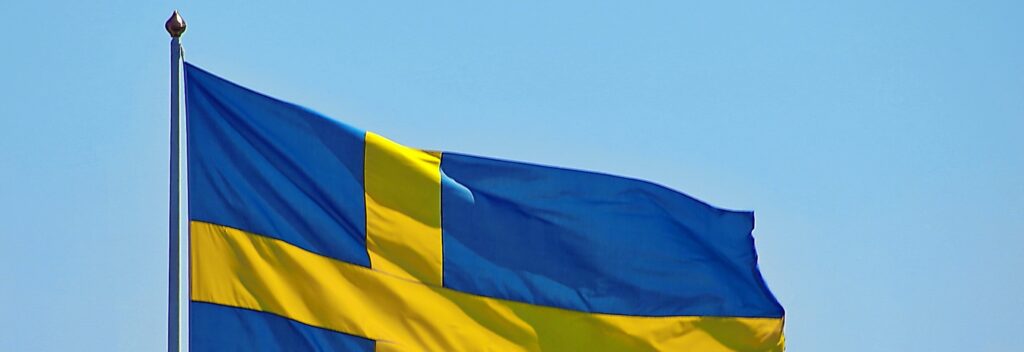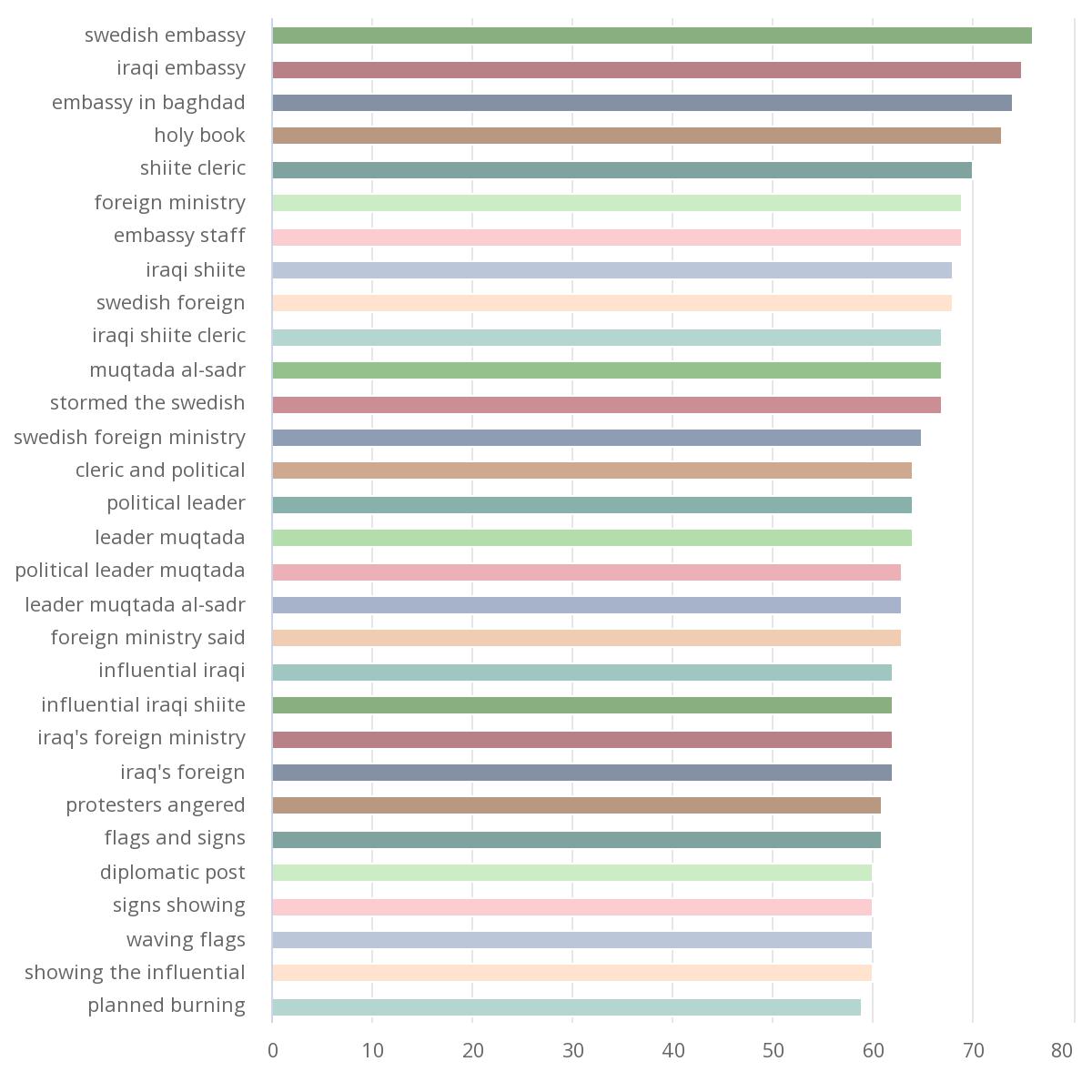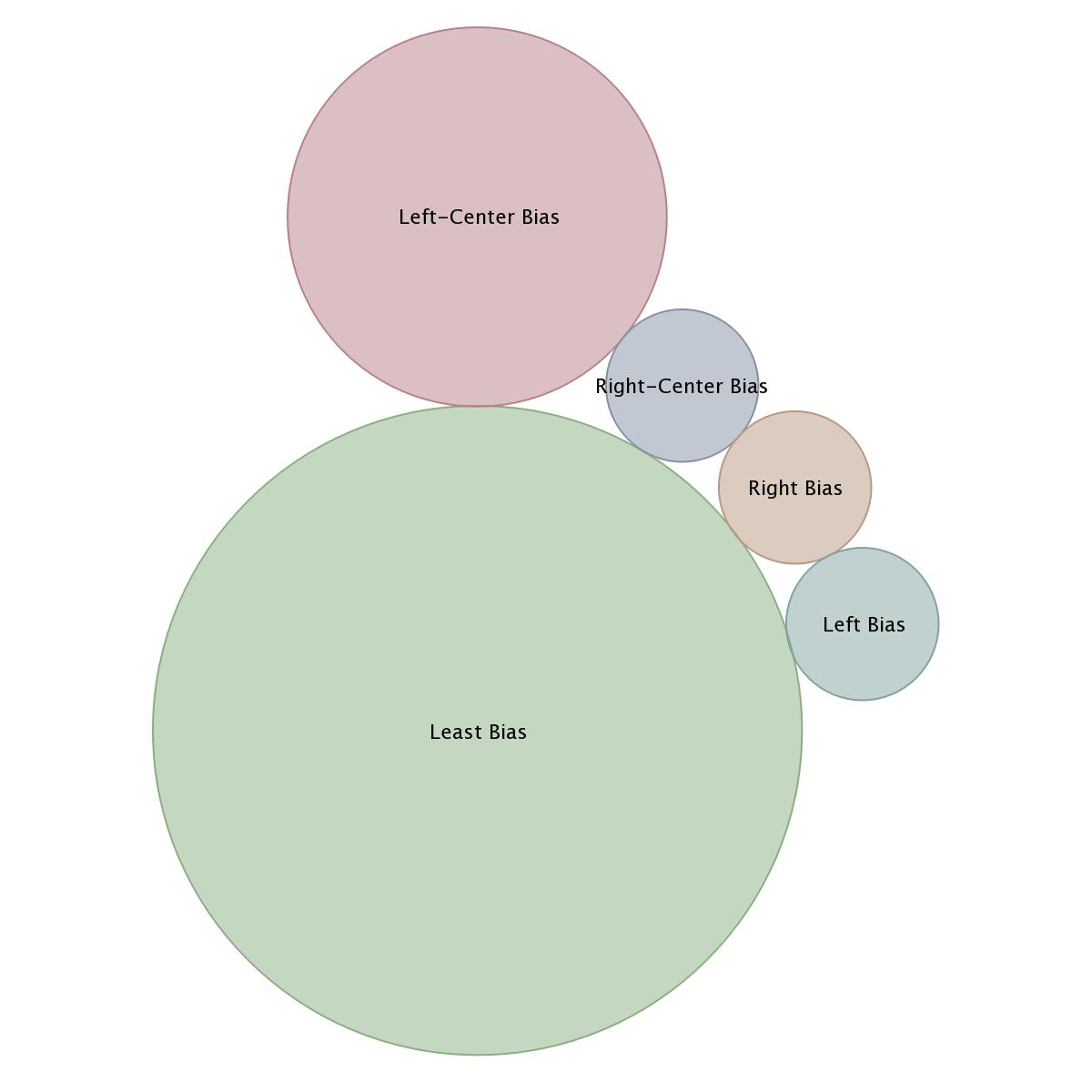
The media narrative of protesters storming the Swedish Embassy in Iraq over a planned Quran burning by an Iraqi asylum-seeker in Sweden has gained significant attention. The incident resulted in the expulsion of the Swedish ambassador from Iraq and the withdrawal of the Iraqi charge d'affaires from Sweden.
Our Kudzu Narrative Intelligence briefs auto-update every few hours with fresh analysis:
The planned Quran burning by an Iraqi asylum-seeker in Sweden has sparked outrage and led to protests at the Swedish Embassy in Iraq.
Key points include:
Protesters stormed the Swedish Embassy in Iraq, occupying the diplomatic post for several hours. Key points include:
Key Takeaways:
The incident has resulted in diplomatic repercussions and a response from the Iraqi government. Key points include:
In this Kudzu Narrative Intelligence Brief, the top surfaced keywords in U.S. media provide valuable insights into the competing narratives surrounding the events. The keywords that appear more frequently in this category are related to the embassy incident in Baghdad and the involvement of influential Iraqi Shiite cleric Muqtada al-Sadr. It is evident that the U.S. media is emphasizing the cleric's role and the political implications of the embassy attack.
The keywords found only in sources in U.S. media further emphasize the narrative surrounding Muqtada al-Sadr and the political implications of the embassy incident. These keywords highlight the role of the Shiite cleric and his followers, as well as the statements from the foreign ministry. The repetition of these keywords reinforces the focus on the political leader and his influence in the events.
In contrast to the keywords in U.S. media, the keywords found only in sources in MENA media provide a different perspective on the embassy incident. These keywords highlight the Quran burning, the involvement of the Iraqi government, and the actions of the Swedish authorities. The emphasis on the Quran burning and the diplomatic relations between Iraq and Sweden suggests a focus on religious sensitivities and international relations.

U.S. Media
Insights for Bias in U.S. Media
Our Narrative Intelligence reveals the following bias distribution in U.S. media:
Least Bias: 146 sources
Left-Center Bias: 80 sources
Right-Center Bias: 36 sources
Right Bias: 21 sources
Left Bias: 7 sources
The majority of media sources lean towards the center, with Left-Center Bias being more than double the number of Right-Center Bias sources. Additionally, Left-Center Bias sources are triple the number of Right Bias sources, and Left-Center Bias sources are more than ten times the number of Left Bias sources.
These findings highlight the prevalence of moderate and centrist perspectives in U.S. media coverage, with a smaller representation of more extreme biases.

U.S. Media
Note: Kudzu Narrative Intelligence briefs update every few hours. Very likely, the Narrative Analysis data visualization depicted in the graphic above will have changed as well.
Image Credit for Article Header: Photo by Mark König on Unsplash